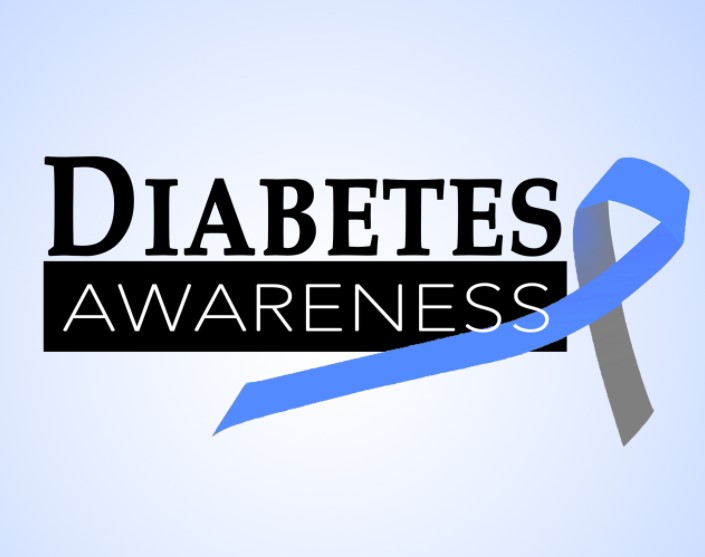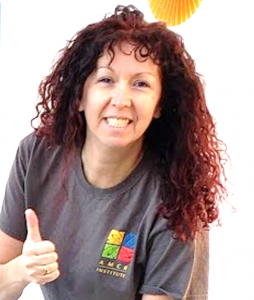Treatments, whether medication like insulin or pill, or medical devices, all come to market through significant and costly (financial and time) clinical research. At Greenphire, we work across many complex therapeutic areas, diabetes being one such field of investigation; to help streamline the trials by reducing barriers to entry and automating financial workflows.
Today we’d would like to introduce you to Carmen Ostermeier, President & CDO of AMCR Institute; a clinical research center focused on diabetes and obesity, to understand what it is like to conduct studies, especially considering COVID-19. She celebrates her 24th type 2 diaversary this year.
Greenphire: Carmen, please share a bit about your experience and path to clinical research.
In my native Germany, nearly every student aiming to graduate as MD or Pharmacist has been exposed to clinical research early on before their graduation from university and pre-doctoral too. So was I. Additionally, I had the opportunity to dedicate my career to clinical research focused on diabetes and related diseases since my immigration to the USA in 2009. I work for AMCR Institute more than 4 years meanwhile.
Greenphire: Tell us about AMCR Institute. How do you operate, where are you located, etc.?
In 2007, AMCR Institute has been established as independent, privately owned clinical research site by Dr. Timothy Bailey aiming to improve lives through quality clinical research and accelerating access to treatments and devices in development. He is an active endocrinologist in the San Diego area since 1990.
Our amazing crew is worldwide renown as reliably high enrolling team, conducting an average of 30 studies with more than 1,000 study participants yearly in diabetes and obesity.
We are conveniently located for all local medical device and biopharmaceutical companies northbound of San Diego in Escondido, CA. Our area can clearly be seen as hot spot for diabetes research.
Greenphire: What is your approach to participant recruitment? Did COVID-19 impact AMCR’s enrollment?
Reliable trial recruitment starts with a solid, well maintained, and easy searchable volunteer database supporting the research indication – in our case diabetes and obesity.
How has our strong proprietary database been built? Constant community outreach and engagement are key, paired with smart marketing geotargeting qualified prospects.
Being trusted by your community helps to be a trusted partner to sponsors.
Once the pandemic hit, enrolling enough participants timely became increasingly difficult for all research sites worldwide. Study referrals from local networks stopped because patients weren’t going to their regular doctor, getting diagnosed and seeking treatment. Luckily, our site had already amassed a large database of prospective study volunteers, and in the end, we ended up enrolling more trial participants than ever before in 2020. We take pride in being trusted by all volunteers despite the confusion, fear, and lack of guidance in the beginning of the pandemic. The health and well-being of our volunteers, employees, our business partners, and the community are and were paramount at any given time.
Greenphire: How has the COVID-19 pandemic impacted your site?
COVID-19 impacted everyone dramatically: Trials were frozen or cancelled, what equals the total loss of business for us. Social distancing required more clinical space, preventive measurements to minimize the risk of transmission changed constantly. We knew that we had to come up with a script for how to deal with it besides just monitoring the evolving situation with the novel coronavirus and its variants closely.
I am proud to say that despite COVID-19, our site didn’t close for one day or furloughed staff. We adjusted quickly and as needed after thorough discussions of options with our volunteers, staff, and sponsors conjointly.I t came in handy that we had expanded our office space on World Diabetes Day 2017 celebrating it with our community. Rededicating office space into clinical space allowed us to more effectively social distance staff and participants. Often participants would say that they felt safer coming into our office than going to the grocery store.
All sites face participant no-shows and drop out, but the pandemic increased those ratios dramatically, forcing sites to reconceptualize their regular enrollment processes. To ensure reliably randomization numbers for sponsors, we put even more resources into recruitment by hiring dedicated personal and decided to backup each committed study participant until final enrollment with additional ‘stand by’ pre-qualified and pre-screened subjects. Such a rather minor adjustment and small financial investment on the front end can save a study by avoiding costly delays due to under enrollment.
Here is another interesting, recent development for our site. While we have historically been focused on diabetes and obesity, we were also awarded to participate in the conduct of COVID-19 treatment and vaccine trials. There weren’t enough sufficient research sites who were capable of study operations. We felt honored pairing our deep research expertise with the operational capacity of local hospitals for this invaluable contribution to battle and manage the pandemic.
Finally, trained clinical trial study staff are difficult to recruit and retain for as well. During the pandemic, this was never as crucial. As a result, we hired more people, and we established a per diem RN pool to be prepared for the rather unforeseeable daily challenges.
Greenphire: Has the pandemic had a financial impact on your site?
Well, absolutely. The initial scare of losing contracted business overnight forced us to revise our strategies and workflows immediately. As independent research we have less than 3 months of operating cash on hand. To be even more efficient and productive became literally a surviving element due to the pandemic and its unknown ramifications.
We were committed to delivering our services without interruption.
Huge investments were needed. Keeping our medical facility and staff supplies up to new hygienic standards became a challenge due to supplies shortage and ensuing skyrocketing costs.
New, rapidly developing remote industry concepts made investment in digital tools essential. We take pride in our most current digital transformation including eConsent, eReg, eSource, eQMS, eCOA, CTMS, Telemedicine, and mHealth.
Unfortunately, there are still sponsors that do not support the costs of new technology despite benefitting from those changes. Another learning process for the research industry.
Greenphire: Your site has been a longstanding user of our ClinCard solution. How has it benefited your staff?
For our team facilitating an efficient and secure electronic method distributing payments to study participants timely and additionally enabling us collecting participant information became a necessity. It takes the burden of ‘traditional’ accounting including writing and handing out checks away. ClinCard enhanced our internal processing, tracking, and reporting.
Much more so, our study participants benefit from immediate disbursement for their time and travel.
So, all in all, who wouldn’t like less frustration around earned money? I don’t know why anyone wouldn’t use it.
Greenphire: The industry talks a lot about “patient centricity.” Let’s talk a little more about the value of a study participant and how we can show that value.
We like to consider ourselves as the advocate for patients when it comes to stipend negotiations with the sponsor.
We usually recruit within 50 maximum 100 miles radius, so the time and effort just to get to a clinical trial visit can be substantial depending on required visits per study design. Here in the valley, there isn’t even a bus or public transportation.
Pediatric studies are even more difficult, with required consenting of both parents and their presence onsite.
Studies with time-consuming in-clinics might be considered by more pre-qualified candidates if there are overnights offered; why not pay for a hotel close by instead of asking individuals to drive back and forth? In general, the convenience of study participation as part of a patient-centric strategy has lots of room for improvements within our industry. Reasonable and fair stipends- that are just path through costs for research sites- should never be part of any bargaining or saving costs in the budgeting process. Considering local wages for to be expected time could be a good start.
Losing qualified study participants over a couple of bucks is clearly neither patient-centric nor helpful for all involved stakeholders. We never encountered any IRB issues suggesting reasonable stipends, this myth is just an ultimate excuse for some.
You really have to be “human centric” to be effective at recruiting – and retaining, clinical trial participants.
Greenphire: What about your thoughts on diversity in diabetes research in particular – what is the status and what can be done?
Everyone in the industry is talking about diversity nowadays. Here in Escondido, California, we live in a melting pot, and pride ourselves on having a very diverse volunteer database. Diversity not only depends on the surrounding area, but it also mandates active community engagement. Diversity doesn’t just happen because we name it now.
For example, we live in a region with a high population of Hispanic individuals. To mirror that aspect and providing the utmost best patient-centric experience and encouraging clinical trial participation we have bi-lingual staff reaching out, educating, and raising awareness about clinical trials as add on option for taking control of your own health with no need for health insurance or co-payment.
We support and contribute to local health fairs and other events, engage with the JDRF, ADA, TCOYD, DRC and other diabetes related non-profit organizations, diverse local Nurse associations, church parishes, health-care networks, the list is still growing. In fact, all our recruiters must be bilingual. At AMCR Institute, we want people to have the utmost comfort and feel respected.
Meeting our staff will give you another contributing diversity related clue – we are a well-mixed and diverse family of different cultural and linguistic backgrounds. Isn’t that wonderful?
Diversity is a crucial issue and not one that will be solved in a day. It takes a village… There isn’t a shelf to identify diverse study recruits. You have to invest in trust building, and at the same time focusing on tracking the desired results of your efforts for potentially needed swift course corrections.
Greenphire: Carmen, looking ahead, do you think that diabetes research is headed in the right direction?
Yes, I do think we’re headed in the right direction, and we can always improve TOGETHER. That applies for all clinical research, not only for diabetes research. It’s essential for the industry to be cross-collaborative.
Accepting and valuing transparency, constructive criticism, less hypocritical politeness will speed up our success as a team for better health of us all.
To enable ourselves to continue developing and testing new treatments and tools, we must remove identified obstacles from those who are trailblazers in research.
By approaching research in a more collaborative way and considering the entirety of the research projects as ‘trinity of stakeholders ‘including patient-, site- and sponsor -centricity, we can radically improve diabetes care for generations to come until we find a cure eventually.
Let’s get this DONE together, not just talked about. Actions speak volume. Are we there yet?



